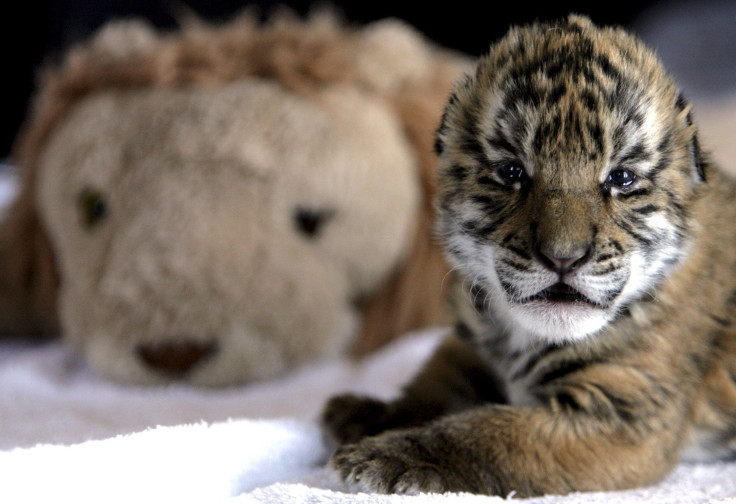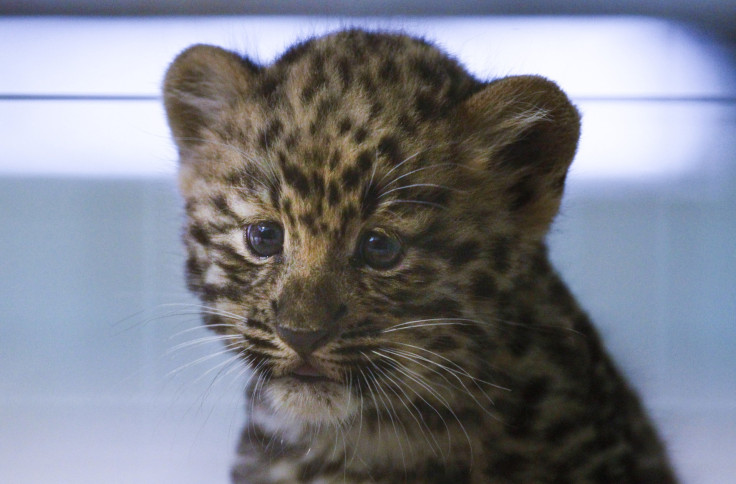5 Animals Closest To Extinction Today, From Vaquitas To Tigers

Many animal species are endangered or threatened, but some are in a more dire situation than others. There are animals whose populations are so diminished that they could fit into a space the size of a small house.
Despite conservation efforts, many endangered species are still threatened by poachers or can get caught up in the hunting of other non-endangered animals. The ones that are most at risk also experience habitat loss, as humans move into their spaces and take away the territory they use to find food or make a home.
Here are five of the animals that are closest to extinction.
Vaquita
Environmental activists like the World Wildlife Fund and actor Leonardo DiCaprio have started a campaign to save the vaquita, a marine animal that looks a lot like a dolphin, but with dark rings around its eyes and marks on its lips that look like a smile. There are believed to be fewer than 30 of the porpoises still alive, swimming in the upper Gulf of California, which is a strip of water that starts at the Pacific Ocean and heads inward between the Baja California peninsula and the other parts of Mexico. Vaquitas are the smallest porpoises in the world, reaching about 5 feet and 120 pounds.
The vaquita is the most endangered marine mammal in the world. Join me + @World_Wildlife and take action. https://t.co/sB80PCeTG9 pic.twitter.com/UQMomVkvlC
“This little porpoise wasn't discovered until 1958 and a little over half a century later, we are on the brink of losing them forever,” the WWF said.
Fishing practices, both legal and illegal, have put the vaquita in jeopardy. One of the biggest contributions to its decline is the use of the gillnet, which hangs down into water vertically and trapped fish by their gills. The vaquitas get caught in those nets and die.
And they are dying off at a rapid rate — the WWF calls them the “world’s most endangered marine mammal” because their population has halved since last year. Over the last six years, it has shrunk 90 percent.
Read: Animals That Have Gone Extinct from Hunting in the Last 150 Years
Amur leopard
This subspecies is the rarest of the world’s big cats, with a little more than 60 of its kind. The Amur leopard calls southeastern Russia and northeastern China home, but poachers have diminished their numbers as well as those of their prey, which further reduces the cats, according to the San Diego Zoo. They have also lost pieces of their habitat to both fire and human development.

China and Russia have worked to save the animal in recent years, with the help of anti-poaching efforts and habitat conservation, and the leopards have hung on and grown their population, but they still remain critically endangered.
Amur leopards can run as fast as 37 miles per hour and jump as high as 10 feet vertically and 19 feet horizontally.
Javan rhinoceros

With just about 60 of t he animals left, the Javan rhinoceros is the rarest of the rhinos. It has already disappeared from Vietnam, when the last of its kind there was killed by poachers in 2010, the International Rhino Foundation explains. Indonesia is the last stronghold of the creature, specifically one national park on its island Java. That’s compared to a historical range that included, in addition to Vietnam and other parts of Indonesia, Malaysia, Thailand, Cambodia, Myanmar, Laos, Bangladesh and India.
According to the WWF, the Javan rhino can weigh as much as 5,000 pounds and has a horn that can be as long as 10 inches and is what poachers are after when they hunt this animal.
Read: What the Biggest Shark Ever Looked Like Before Extinction
Saola
Humans haven’t known about the saola for very long — the WWF notes that it was found in 1992 during a survey in Vietnam. It looks like an antelope but is related to cattle and has two sharp horns that are about 20 inches long.
The animal is found in the Annamite Mountains in Vietnam and Laos, but experts do not know how many there are. One of the things putting it at risk is habitat loss related to humans’ community development. They are also sometimes caught up as people hunt for other animals.

“The current population is thought to be a few hundred at a maximum and possibly only a few dozen at a minimum,” the organization says. “Its rarity, distinctiveness and vulnerability make it one of the greatest priorities for conservation in the region.”
Making things difficult is how elusive the saola is. According to the IUCN Red List of Threatened Species, saolas have only been recorded in the wild five times, although there have also been observations of dead or captured animals.
South China tiger
Authorities have not seen a South China tiger in the wild for about 25 years, according to the WWF, so they are believed to be extinct in the wild even though there is a small chance that there could still be some out there. They disappeared because they were killed by the thousands in the second half of the 20th century through hunting and habitat loss.
Some of these tigers still live in zoos in China and on a wildlife reserve in South Africa, so they are still hanging on. However, because they exist in such small numbers and are all descended from the same small number of tigers, they have a lowered genetic diversity and are becoming inbred, the IUCN Red List notes. They have difficulty breeding and some of their genes might have come from other tiger species.
© Copyright IBTimes 2024. All rights reserved.





















